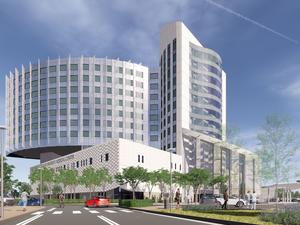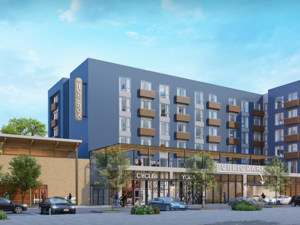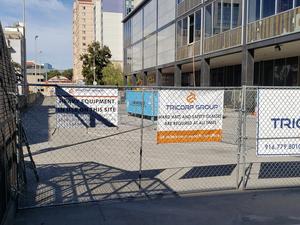
Concrete isn’t exactly known as “innovative.” It’s among the oldest construction materials on Earth, tracing its roots to 1300 B.C. — and it remains the most widely used. It’s literally the foundation of our society, and for good reason: It’s strong, durable and reliable.
In California, concrete has paved the way for 400,000 miles of roads, highways, bridges and tunnels — equal to 16 trips around the Earth.
But concrete also comes at great cost: It’s among the largest single sources of greenhouse gas emissions — as much as 7% of the world’s total, twice as much as all the carbon dioxide generated by every car and truck in the United States.
For the longest time, there wasn’t a solution. But thanks to innovation, now there is — one that will support our booming concrete and construction sectors while protecting industry jobs, reducing climate impacts, enabling far cleaner buildings and infrastructure and cementing California’s legacy as a world leader on prosperous and effective climate action.
And with the expected influx of federal dollars to rebuild California’s infrastructure, now is the time for our lawmakers — and, in turn, our concrete, construction and development industries — to embrace innovation. No infrastructure project can be “green” without it.
Innovative companies are now deploying — at scale and at cost — what is known as “low-carbon concrete.” There are a few ways of making the material, but among the most common and efficient solutions for replacing concrete’s carbon-intensive key ingredient, Portland cement, is captured carbon dioxide.
By adding CO2 to fresh concrete, the mix becomes as strong or even stronger than traditional concrete, at lower cost — and not only reduces new emissions, but locks away past emissions that would otherwise contribute to the climate crisis. For our concrete sector, our developers, our communities and our state, that’s a win-win-win-win.
We’ve seen growing demand for the material. LinkedIn, for example, built its new Mountain View headquarters with low-carbon concrete. Meanwhile the new generations of homebuyers, homebuilders and office executives — millennials and Generation Z — are intensely concerned about climate change, and how they personally can help stop it.
In the face of our urgent climate crisis, and even more immediately, the enormous flow of federal infrastructure spending, California lawmakers have the rare opportunity to rebuild our state’s roads more sustainably while also accelerating this rising, industry-supported innovation.
Just last year, our representatives in Sacramento and Gov. Gavin Newsom took a significant step forward by signing Senate Bill 596, a bipartisan measure introduced by Sen. Josh Becker, which puts the state on a path toward zeroing out our emissions by 2045. ‘
Now, lawmakers can redouble the effort by voting for a companion bill, SB 778, also introduced by Sen. Becker, which would incentivize builders who incorporate low-carbon concrete into their projects.
As a family-owned and operated concrete business, serving the Sacramento region since 1960, I’m writing to tell you that SB 778 is good for our industry, good for jobs, good for our community and good for California. With flexible incentives instead of rigid mandates, this bill will encourage developers to use low-carbon concrete in their projects. It will in turn expand the market for sustainable concrete, providing the certainty needed for concrete suppliers to invest in the technologies to produce it. And this legislation will enable suppliers to meet growing demand from Californians to build more sustainably.
What California does, much of the country and the world follows. For example, the benefits of the Caltrans highway standards continue to make an impact far beyond our state’s borders.
New roadways and sidewalks alone account for nearly half our state’s concrete consumption — meaning big changes in government construction standards will greatly help California meet its sustainability goals to protect our communities — and our businesses.
Concrete has built society for millennia. Our infrastructure, when we build it right, stands for decades or even centuries. What we do now will reverberate — in our homes, buildings and bridges and our atmosphere — for generations. Low-carbon concrete, and SB 778 especially, will help ensure that we lock in our climate progress and California’s climate leadership, now and for the future.
Andrew Gilmore is the corporate controller of ABC Ready Mix, a family-owned concrete business serving the Sacramento region since 1960.









